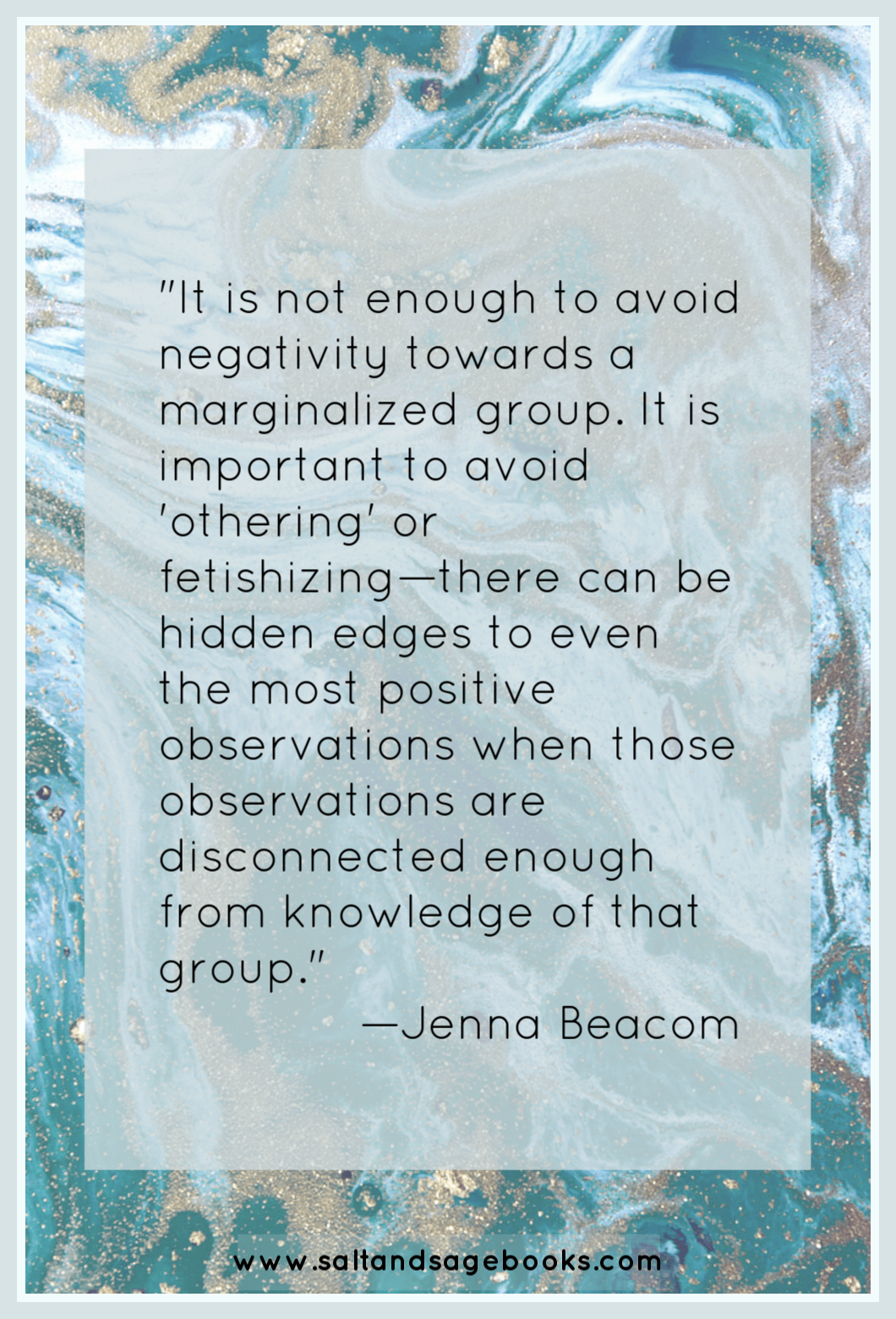Welcome to the Salt and Sage Books Spotlight series! We welcome you into our creative community by inviting you to meet our editors and expert readers, and to hear a little of their own story, in their own words.
We believe that by honoring each other’s voices, we’re able to turn creativity into community and change the world through story.
Once, I was having a conversation with an employee when my boss got my attention.
“Calm down,” he mouthed.

I was confused. I’m deaf, and so was my employee. We were having a pleasant conversation in American Sign Language (ASL) about the weather. It was rather hot outside.
“Was I making noise?” I asked. I’ve been deaf since I was a teenager and still speak. Sometimes, when I’m deep in conversation with another deaf person, I unconsciously voice some words as I sign them.
“No,” he said. “You’re just . . .” He then proceeded to flail his arms and bug out his eyes and contort his face. The impression he gave was of someone who was extremely angry. “Take that all down a notch, okay?”
My boss was a hearing non-signer. My employee and I looked angry to him, and he was concerned both that I was being too mean to my employee, and that I was not being professional in front of my other employees and clients.
But what looked like anger to him was literally grammar. Just plain grammar.

Many people think of ASL as a way to communicate with hand signs, but much of the information conveyed via ASL occurs on the face. Furrowed brows accompany “who,” “what,” “where,” “when,” and “how.” Raised eyebrows transform a statement into a question. Much of the meaning and nuance is conveyed by facial expressions. And these are not random “what you feel” sorts of things. They’re very specifically codified, the building blocks of a full, sophisticated language. Different from English, to be sure, but in no way inferior to it.
I thought of this hearing, non-signing boss when I started to write about hearing, non-signing people’s fascination with ASL interpreters during governors’ coronavirus press briefings.
On the one hand, I’m always happy to see anything positive flow the way of ASL! My boss’s flailing and grimacing is all too often how people characterize ASL users. Interpreters who appear on screen are dismissed as “distracting” or “overwrought.” I’m forever seeing commenters ask why captions aren’t enough. (Captions aren’t enough because they’re often inaccurate, and because English is a second language for many deaf people, who would gain a much more thorough understanding via ASL. And in matters of public health, those nuances can be really important.) (Although this doesn’t preclude interpreters from just going ahead signing things wrong, on purpose. Like one in Texas who was “moved by God” to sign that it was okay to go to church when the governor was saying the opposite!)
But on the other hand, I bristle a bit at the praise. Especially when hearing non-signers say that an interpreter is doing “such a great job!” or “is so skilled!” What on earth does that mean?
What metrics are being used? How can someone who does not know a language at all make a determination that a native speaker is using that language well?
Because I am both endlessly curious and quite nosy, I have asked many people that question.

The answers I have received are usually along the lines of:
The interpreter is so expressive.
It’s so beautiful to watch.
It’s so exhilarating.
It’s so moving.
I get this, especially as someone who didn’t learn ASL until I was in college. I remember when I thought ASL was a lot. Such a lack of inhibitions! It was beautiful and a little scary. It was definitely fascinating.
But ASL is not, like, dancing. It’s not a performance. It is communication. Those expressions that read as high emotion to non-signing people—whether that emotion is anger or delight or fear —are usually as mundane to native ASL users as the period at the end of this sentence.
If a hearing person speaks the words, “It is imperative to stay inside for two weeks,” they can do so calmly and firmly—without any particular vocal inflection and without any facial expressions at all—and convey all of the necessary information. In ASL, body positioning and facial expressions are employed to bring the meaning from, “It’s something you could maybe do, I dunno, if you feel like it,” to, “It is something you must do.”
But that body positioning and facial expression that reads as emotion to non-signers is really just the word “imperative”!
Meanwhile, so often we in the deaf community see hearing signers who are lauded by hearing non-signers as signing especially “beautifully,” when they are not using grammar properly. While their fingers are delicate and their arms graceful, the actual meaning does not come through.

How does this all translate to writing? One thing to keep in mind is that it is not enough to avoid negativity towards a marginalized group. It is important to avoid “othering” or fetishizing—there can be hidden edges to even the most positive observations when those observations are disconnected enough from knowledge of that group.
It can also be helpful to separate out your own feelings vs. objective statements of truth. If you love sign language, you love sign language! That’s cool! But there’s an important difference between a non-signer saying, “I was just fascinated by the interpreter,” and “The interpreter was doing an excellent job.”
It’s difficult to both write your own lived experience and write books that reflect the diversity in our world. Only the most intersectional among us can do both at the same time! That’s where sensitivity readers can be invaluable.

















